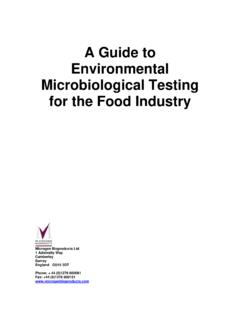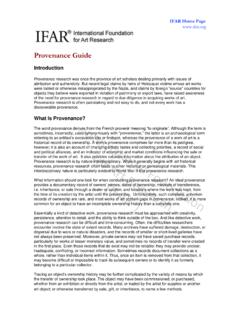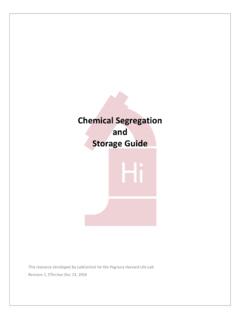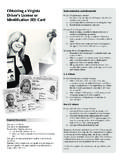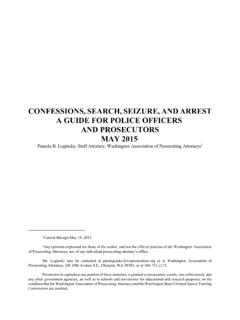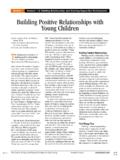Transcription of A Guide to Environmental Microbiological Testing for the ...
1 A Guide to Environmental Microbiological Testing for the Food Industry Microgen Bioproducts Ltd 1 Admiralty Way Camberley Surrey England GU15 3DT Phone: + 44 (0)1276 600081 Fax: +44 (0)1276 600151 CONTENTS PAGE 1) Introduction 3 2) Environmental Sampling Programs 4 3) Features and Benefits 9 4) Kit Description 10 5) Procedure 11 6) Performance Characteristics: 15 i.
2 Pre-moistened Swabs 15 ii. Coliform Detection Broth 15 iii. Salmonella Detection Broth 20 iv. Listeria Detection Broth 23 7) Positive Results What Do They Mean? 29 3 Figure 1. Food Safety Pyramid (SSOP s Sanitation Standard Operating Procedures)INTRODUCTION . The Food Safety Pyramid (Figure 1.) provides food manufacturers and processors at all levels with a simple structure to enable the protection of both the products manufactured by the company from contamination by microorganisms (which have the potential to cause food spoilage and food poisoning), and the customers who may later consume these products. Microorganisms are always present in food handling environments. These microorganisms can be characterised as belonging to 2 distinct groups: transient and resident.
3 Transient microorganisms are usually introduced into the food environment through raw materials, water and employees. Normally the routine application of good sanitation practises are able to kill these organisms. However, if contamination levels are high or sanitation procedures are inadequate, transient microorganisms may be able to establish themselves, multiply and become resident. Organisms such as Coliforms and Salmonella spp. and Listeria spp. have a well established history of becoming residents in food handling environments. Environmental Monitoring Food processors should employ Environmental sampling programs to monitor for general levels of hygiene (the efficacy of general cleaning and sanitation for the removal of transient microorganisms) or indicator Testing may be achieved through a variety of methods including visual inspection, ATP monitoring or the detection of surface protein residues.
4 In addition, pathogen specific Environmental sampling should be undertaken to monitor for the presence of specific pathogens that may be present as transient or resident microorganisms. The detection of specific pathogens serves two important roles. Firstly it highlights the presence of important food pathogens which may have been introduced into a food handling environment but may not have been eliminated by routine sanitation practises and therefore may be passed onto other food materials being processed. Secondly, it assists in determining sources of these important pathogens that may be resident. Good Manufacturing Practices Environmental Monitoring HACCP SSOP s 4 Environmental Sampling Programs Introduction All food handling companies and establishments should employ an Environmental sampling program to monitor for food spoilage microorganisms and food poisoning pathogens. Such a program, if well designed will enable the detection of unacceptable microbial contamination in a timely manner.
5 Over the last decade Environmental monitoring has changed from essentially random sampling, employing imaginary grids over a production area and Testing points within each grid, to current methods that are focussed on risk assessment to determine the most appropriate methods for monitoring. Sampling programs should include the collection of samples during production on a regular basis from work surfaces in a randomised manner which will reflect the differing working conditions. In addition, samples should be taken from these sites after sanitising and from sites which may serve as harbours of resident organisms. Sampling should not only be conducted on food contact surfaces, but the evaluation of non-food contact surfaces such as conveyor belts, rollers, walls, drains and air is equally as important as there are many ways (aerosols and human intervention) in which microorganisms can migrate from non-food contact surfaces to food.
6 The results of these samples should be tabulated as soon as available and in such a way that they can be compared with previous results in order to highlight trends. Determining the Frequency of Monitoring The development of an effective Environmental monitoring program should reflect a balance between employing the available resources efficiently and monitoring at sufficient intervals so as to ensure that a meaningful picture of the levels and nature of bacterial contamination can be obtained. When establishing an Environmental monitoring program, the frequency of monitoring different areas may be determined based on Criticality Indexes relevant to each specific processing area or environment, or by using a Zones of Risk System. Criticality Indexes The development of a criticality program on which monitoring frequencies can be based should be focussed on the targeting of the critical steps in the manufacturing process.
7 Therefore, the final manufactured product should receive more monitoring than early manufacturing steps end product Testing of product. The use of criticality indexes provides a means whereby the frequency of monitoring can be assigned to each designated critical area. The assessment of risk should be based on the potential impact any risk may have on the final quality or safety of the products being manufactured exposure to low temperatures would constitute a low risk whilst the presence of water or warmer temperatures would constitute a high risk. The scheme employed by each food handling or manufacturing environment will necessarily be unique to the processes and types of food being handled in that environment. An example of how such a scheme can be constructed is shown in Table 1. 5In the development of such a scheme, all manufacturing areas should be evaluated against a series of guiding questions which may include: Higher Weighting should be given to: Dirtier activities.
8 Areas where dirty activities are performed in close relative proximity to clean areas. Areas which are often wet. Areas with open drains. Areas with high levels of staff activity. Higher Monitoring Frequencies should be assigned to: Warm or ambient handling areas as apposed to cold rooms. Areas with sinks, drains or ongoing wetness as opposed to dry areas. Areas where unprocessed raw foods are handled. Product filling. Packaging Table 1. Criticality Indexes and Monitoring Frequency Once the critical factors have been established a final Monitoring Schedule can be developed (Table 2.). Most food manufacturing processes involve one or more steps that effectively kill pathogenic bacteria, although manufacturing involving the production of fresh (salads etc), frozen products (vegetables, meats, poultry and fish) or some dairy products may not.
9 In manufacturing in which processes designed to kill bacteria are employed, the challenge is to prevent the processed food from becoming recontaminated. In these situations, food handling surfaces and possibly equipment become contaminated by bacteria travelling through the food processing environment through a series of steps before finally coming into contact with the food that has been processed. Listeria species for example can multiply rapidly to high numbers on wet areas such as floors and drains and then be transferred to conveyor belts and benches through human intervention or the use of high pressure water hose that both can result in the production aerosols . Any processed food that subsequently touches these surfaces may the become recontaminated. In the development of any monitoring program, post-processing Environmental monitoring should always be considered as likely areas where pathogens may reappear and contaminate food post-processing.
10 Generally, these post processing environments should be relatively free of bacteria when production commences. After periods of production, it should be expected that the level of bacterial Criticality Index Frequency of Monitoring 1 Daily or Each Batch 2 Weekly 3 Fortnightly 4 Monthly 5 Three Monthly 6 Six Monthly 6contamination of these areas should increase. However, the presence of microorganisms normally present in the pre-processed foods should not be expected. Criticality Index Likelihood of Impact on Finished Product Definition Frequency of Monitoring 1 Highly Likely Mixing and Filling Machines work places are sanitised daily Daily or Each Batch 2 Likely Packaging areas or areas in which final handling is performed Weekly 3 Moderately Likely Areas where process food is exposed to the environment Fortnightly 4 Unlikely Cold areas where little or no processing is performed Monthly 5 Very Unlikely Areas in which indirect exposure to prepared and packaged product is unlikely Three Monthly 6 Highly Unlikely Any are that is uncontrolled or
